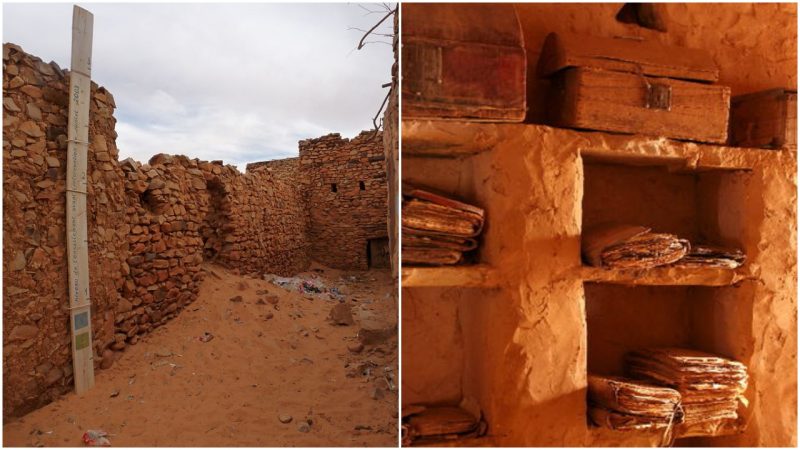More often than not, we hear about coastal cities dealing with climate change and the growing threat of rising sea levels. In the U.S., Florida seems to be among the most vulnerable to climate changes, with recent studies confirming that this state has more residents and property at risk than any other American state, the BBC reports.
Far away from Florida, remote outposts in the African desert, places like Chinguetti, face other crises. This Mauritanian village was once a dynamic trading center of the medieval age, one of the country’s four “ksours,” where Sunni pilgrims on their way to Mecca assembled each year to share family news, pray in the city’s old mosque, and exchange goods. Thousands of camels carrying ivory, silver, and wool, among other treasures, arrived at Chinguetti as the place prospered between the 13th and the 17th century.
Looking back, about 20,000 people called Chinguetti their home. However, the entire settlement has now shrunk to fewer than 1,000 people.
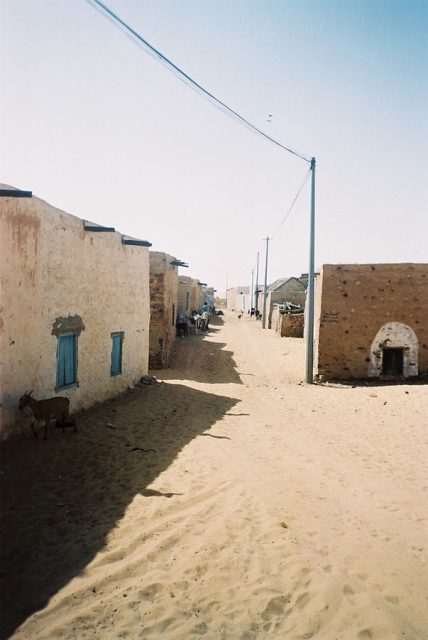
The locals are today faced with tasks such as wetting down the sand to prevent it from being blown around. Many structures have been abandoned.
Each year, the Sahara Desert extends a few dozen miles toward the south, permanently changing the African landscape to lifeless, barren terrain. Mauritania has faced this merciless process for an extensive period already, and it only seems to have intensified lately.
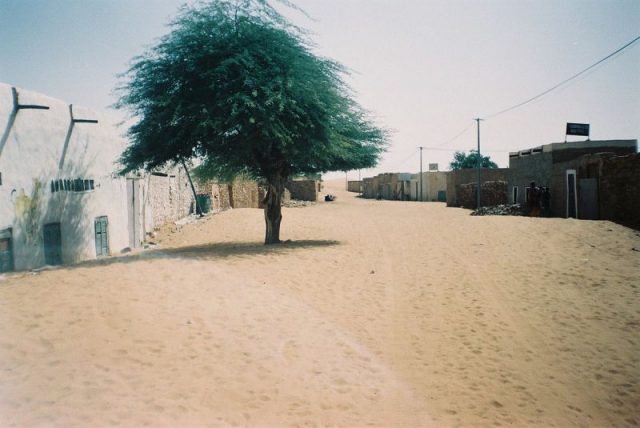
Neolithic paintings found in caves relatively close to Chinguetti show how the realm was once a thriving green area, an oasis and a home of antelopes and other wildlife–but today the region looks somewhat desolate.
The ever-shifting sands of the desert are a looming danger for Chinguetti, threatening to bury this place, just like that last symbolic scene of Ron Fricke’s Samsara. Sand dunes could override Chinguetti within generations, some experts believe.
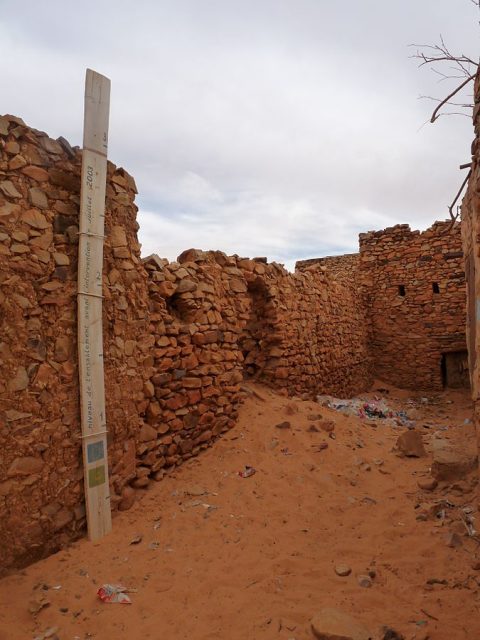
Still standing, Chinguetti’s great Friday Mosque is regarded one of the most significant sites across Mauritania. Built of unmortared stone, the mosque has a squared minaret topped by egg-shaped finials that define an axis pointing towards Mecca. Other renowned structures in the old village of Chinguetti include its several small libraries.
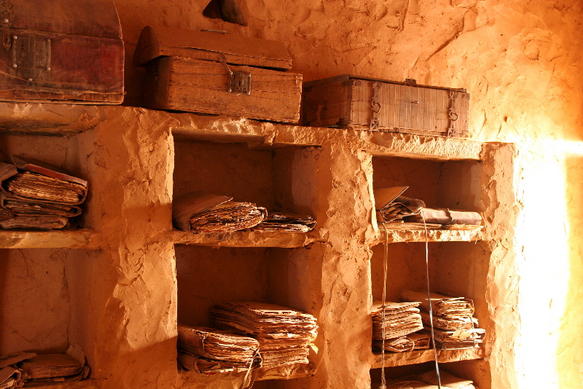
The libraries were built to house manuscripts and religious writings left by pilgrims, and were of great value to students who arrived after them; they were studied next to other subjects such as mathematics, astronomy, and medicine.
Only five of these mud and rock libraries have remained intact to date, reportedly keeping roughly 1,300 Quranic manuscripts that remain. Some visitors still come to see the books or to pray at the local mosque (non-Muslims are not allowed an entrance in the mosque), and they are also a source of income for the few locals remaining in Chinguetti.
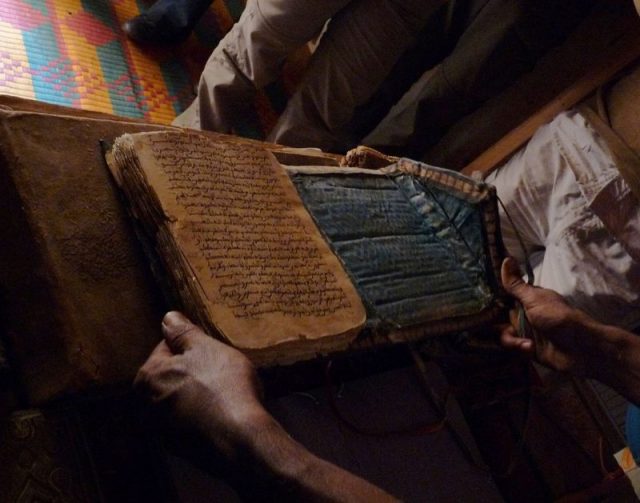
While some of the sacred books are stored in wooden boxes, others are left open and exposed to the arid desert air, all the more reason for conservationists to be anxious that the scripts might be permanently damaged. Owners are unwilling to break with tradition and move their sacred texts to a safer place.
Visit a local librarian, and people say they exude an air of dignity over what they guard here amid the Sahara. However, this could turn to nostalgia as things have moved forward for the rest of the world, and not too many options are left with the uncertain future of Chinguetti. These guardians of the ancient libraries need to adapt to change and save what can be saved before it’s too late.
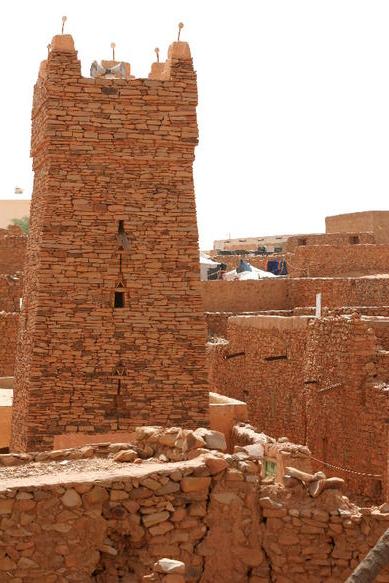
The first initiatives to protect Chinguetti came in 1996 when UNESCO granted the village World Heritage Site status, emphasizing its rich tradition and also its ambiguous future. Not much has been done since, however. As sandstorms are getting stronger and seasonal flash floods more violent, the village structures succumb to more erosion each year.
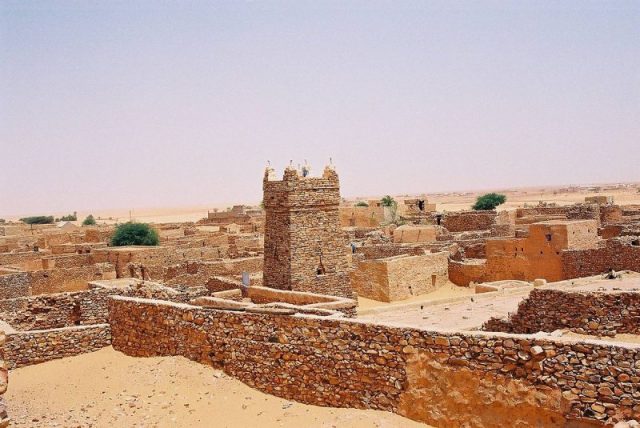
Conservationists have tried to relocate some book collections and launch restoration programs, but library owners are not meeting them halfway. In the local political climate, emblematic of a number of other African countries besides Mauritania, conservation initiatives are frequently doomed to fail from the start.
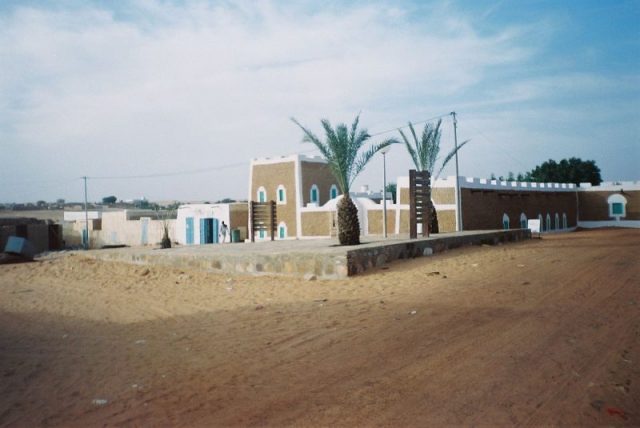
As the Smithsonian remarks, the future of Chinguetti may largely
rely on futuristic projects. It could mean that genetically modified plants are bred and introduced in the area, aside from launching projects that will allow reusing wastewater for irrigation purposes. But when similar projects have been tried in the past, as in the case of China’s Gobi Desert, they have not regenerated the area as expected.
There can be no guarantee that Chinguetti will be saved from the perils of the ever-encroaching Sahara. It might be that this important place will one day fall into oblivion under endless desert dunes, just decades from now.
